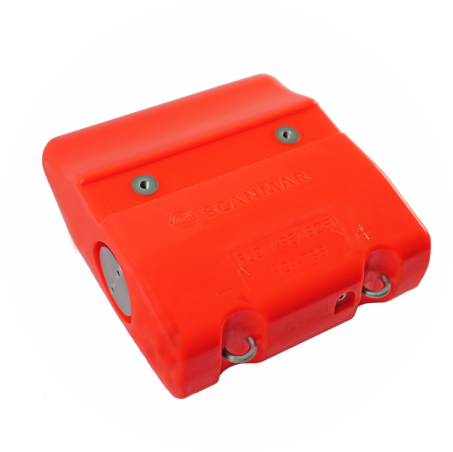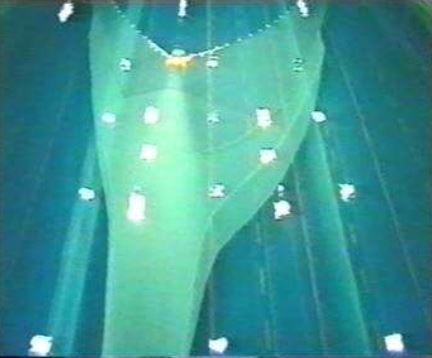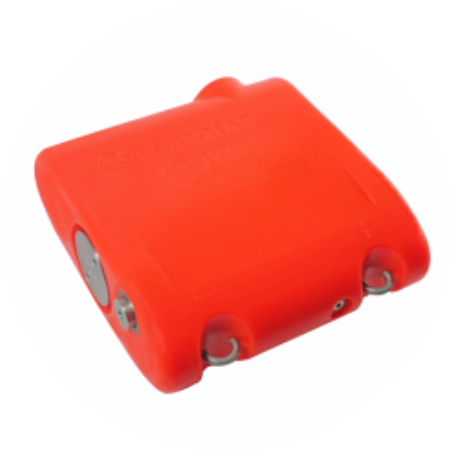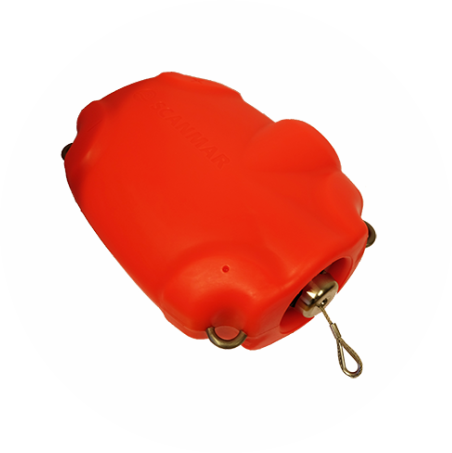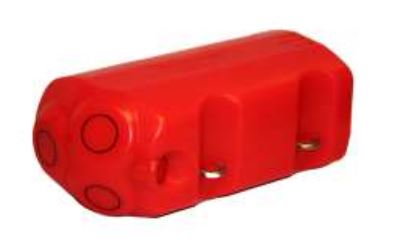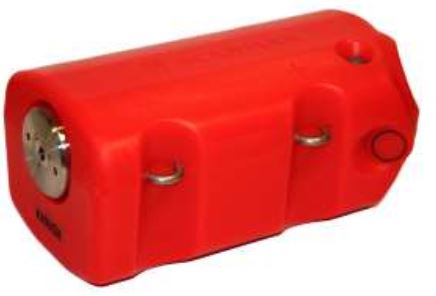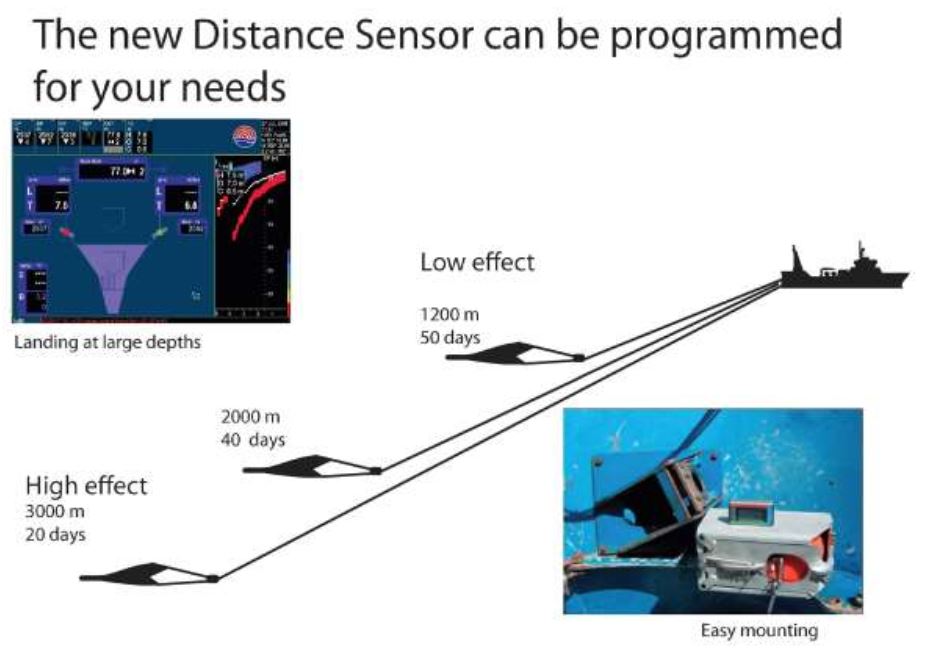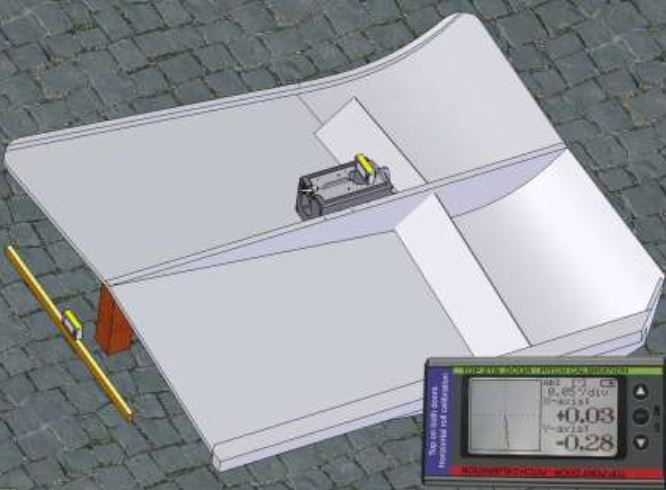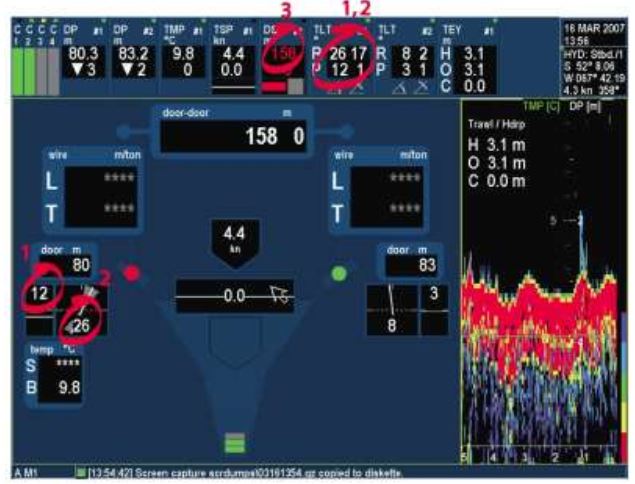Door sensors – new generation with many advantages
We have heard trawl producers say that 80% of a trawl’s efficiency comes from the trawl doors working perfectly. We do not know exactly, but what we do know is that the significance is large. Door Distance sensors have, as we see it, been the most important sensors for most fishermen though 25 years, and now many call the Door Angle sensor the most important sensor Scanmar has developed.
The sensors are based on SS4 ScanSense technology:
- New sensor construction and newly developed plastic material
- 5 times larger battery capacity
- Programmable sending effect – multiplies the working time
- Fully charged in 2.5 hours
- Can be charged while on the doors
- Multifunctional – the sensors have several functions built in
- The functions can be used simultaneously or alternately
- New mounting kit; easy to weld on
- Simple to switc h frequency when interference occurs
- Light diode shows when the sensor is transmitting
- Simple self test
The sensors that are included in the new Door sensor series are mounted parallel to the door’s horizontal and vertical axis. This makes the pockets sim ple to mount, while all sensors can be upgraded with an Angle function as well. The mounting is therefore important in order to receive correct angle measurements.
Functions included in the new SS4 Door sensor series are:
- Distance
- Angle
- Depth
- Tension
- Temperature
The sensors are delivered with one or more functions activated, and can, if desired, also be upgraded later by simply downloading a license.
New Distance sensors – long working time, simple charging
New technology, both when i t comes to sensor construction as well as battery and charging technology, has made it possible to develop Distance sensors that can be programmed precise ly to suit different con ditions and to create solutions that eliminate laborious operations. Scanmar has developed three new variations of the Distance sensor based on the new SS4 technology so that each fisherman can have exactly what he wants.
The most advanced of the new Distance sensors has everything you could wish for from a distance sensor:
- Several hundred working hours; varies with the setting
- Short charging time
- Charging while attached to the doors
- Programmable sending effect
- Programmable updating rate
- Multifunctional: Can also be combined with Door Angle , Depth and other functions, either when acquired or later with a simple download of a license.
- Programmed from the bridge
- Automatic programming of bridge unit and sensor
Distance sensors can later be upgraded so that they have full functionality on the same line as the most advanced sensors.
The Slave sensor (e.g. the mini - transponder) comes with all the same attributes and comes in different configurations . The most advanced is the full Slave sensor, which is upgradeable to include all the same functions as the Master Distance sensor. Including the full range of functions will allow fishermen to have a more complete picture of the trawl doors in particular, but the entire trawl setup as well.
In addition, the Slave sensor comes in a simple r variation that a direct replacement for previous mini - transponder sensors except that it requires a different door holder than the old sensors . The new “stripped down” Sl ave sensor has large battery capacity and is quickly charged, but cannot be programmed or upgraded.
The Distance sensors have probably been the sensors that have meant the most to many fishermen, even though some will probably consider Trawl Eye , Trawl Speed /Symmetry or Catch sensors as the most important, not to mention the new Door Angle sensors. If you ignore the b ucket effect and t wist of the trawl, the trawl doors’ function is what means the most for efficient trawl fishing.
When Scanmar introduced the Distance sensor , the battery technology was a big problem and we chose two different updating rates , both acceptable in regards to charging frequency . What is interesting is that producers, who later have tested the market, have chosen the exact same updating, c onfirm ing that the choice we made 25 years ago was not bad.
All the new Distance sensors from Scanmar are mounted on the doors in the same way as the Angle sensors; they are mounted in holders that are welded directly on to the doors, parallel with the door, and not like it is usually done by cutting a hole into the door, even though this is more costly to produce because of the sensors’ construction, amongst others because it demands two acoustic senders, one on each side.
The advantages are first and foremost that the same sensors can be upgraded to also show the door angles; as it is 100% required that the sensors be mounted on the doors’ vertical and horizontal direction. Besides, the sensor pockets will not stick ou t on the doors’ backside and thereby reduce the spreading force because of the on the current.
Door Angle: The Most Important Function?
The question in the title can of course not be answered just like that, but the fact is that many fishermen claim it to be true. But one is, after all, a little extra excited when receiving something new, so let us look a bit closer at whether the Door Angle function really is the most important function.
Let us first dwell for a mo ment on the Distance sensors. When Scanmar chose to develop Distance sensors more than 25 years ago, it was mainly for the fishermen to know if the doors lie down. Research reports we studied showed that in certain areas errors could occur in 30% of the hauls. Simultaneously , the varying door distance would immediately reveal that something was wrong. But for many the greatest reward was perhaps in connection with the rigging of new gear, after reparations, during shooting etc. In other words , an array of other useful “applications” that were not t hought of the first time around came “on their own” after some time.
Correct mounting position is vital to receiving accurate measurements. For more information on how to properly mount SS4 Doo r sensors, please go to our website www.scanmar.no
Door angles (bottom doors)
Here we are talking about three angles:
- Attack angle: Angle between trawl shoe and towing course
- Roll angle: The door’s roll angle inwards (+) or outwards ( - )
- Pitch angle: The shoe points upwards (+) or downwards ( - )
Scanmar uses the doors’ vertical axis (the line from the door’s top to bottom) as an indication of the vertical position and roll angle. This is important for a correct and comprehensive statement of all angles on all the doors and to understand the forces that affect the door.
The fishermen have “always” been most concerned with the Attack angle, and in “the old days”, in the lack of anything better, it was probably sensible. Today the situation is different.
ATTACK ANGLE
There is a range of different doors on the market and fishermen make their choice based on their experiences, the door’s construction , etc. Regardless of why a fisherman chooses a certain door , there are a number of factors that make a door – any door – as efficient as possible.
There are big differences be tween the different doors when it comes to attack angle for largest possible spreading force; it can vary from a little under 300 to a little over 400 . The most interesting thing here is that most doors seem to have an area of about 6 - 80 around the optimal point where they have about the same spreading force in the entire area. This is interesting because one can fish at different depths (change the warp lengths) without it having significant effect on the spreading force. Thus , if the door is rigged correc tly for the area being fished in the attack angle can be ignored.
ROLL ANGLE
The port door loses bottom contact, the trawl collapses. (1+2) A lot of pitch and roll makes the door unstable and loses bottom contact. (3) the trawl doors lay down and lose contact.
The roll angle is the factor that should receive the most attention . We all have an understanding of the trawl door’s crucial meaning for the trawl to fish efficiently, but do we share the same thought of what actually makes a door efficient?
Studies of trawl door efficiency have been conducted in which the spreading forces and towing resistance are measured in flume tanks . T he measurements are taken while the doors are vertical and with different attack angles. Althoug h this can be interesting information, it may perhaps also contribute to taking the focus away from what is important:
What is important is how much the door distance reduce s when the door is not vertical; how much do you have to increase the towing spee d in order to achieve the same door distance , and how much will the fuel consumption increase as a result of the increased towing speed?
We will look a bit closer at these questions:
If we disregard the forces that emerge from the door’s friction against the seabed (relatively insignificant for modern doors), which increases somewhat when the door tilts a little outwards, and reduces when the door tilts inwards, we have the following c onditions:
A small roll angle means little : up to 150 mean s a change of no more than 3 - 4%. If the angle increases more, up towards 300 , the force reduces by 13 - 14%, and if we get closer to 450 the change will be 30%. From these numbers it seems that it m eans little if the door’s vertical position changes a bit, but over 150 it will have significant consequences for both door distance and fuel consumption.
Efficiency curves ( door distance in relation to towing resistance) for trawl doors have been create d, but since they are of little importance in comparison to the significance of the roll angle of the doors and the towing resistance fr o m the trawl, we can disregard it.
We can then make the following, very simplified overview for how much it “costs” to increase the speed in order to obtain the same distance on the trawl doors:
The coefficients for the trawl doors’ spreading force and towing resistance is measured in a f lume tank when the doors are vertical, and since they are close to each other in value and the majority of the towing resistance (80%) comes from the trawl and gear, we can ignore them in a very simplified calculation.
The towing resistance increases at a rate five times the square force multiplied with the increase in towing speed . This means that if the towing speed doubles from 1 to 2 knots, the towing resistance quadruples. For trawl doors of 4 square meters this means that the towing resistance incre ases from 400 kg to 1600 kg.
If we imagine the same basis, but the trawl doors tilt approximately 300 inwards, the door area that is responsible for the square force (together with the towing resistance) is reduced by about 0.6 square meters. This means that the towing resistance has to be increased substantially in order to have the same square force, which again leads to a significant increase in towing resistance and fuel consumption.
If the towing speed usually is at 3.5 – 4 knots, the effects will be very significant.
One should focus on the meaning of roll angles between 150 and 300 and then note that the lost square force lies between 5 and 15% and make a rough estimate of how much the towing speed and fuel consumption increase. (NB! Remember to use the correct door size and towing speed in your calculations). What also is important to many is to make sure to rig a bit differently depending on depth conditions/warp lengths.
An other thing; many do perhaps have trawl doors that are not quite acc ustomed to the trawl, in which case adjustment of angles, also the attack angles, can be of great significance.
NB! Be aware that when the towing speed increases the doors can straighten up, and a tall trawl will lose its height, so that the towing resis tance does not increase as much as the calculations would imply.
Although what has been mentioned above are some of the greatest advantages of using the Door Angle function , there are many other benefits as well:
- In the shooting phase the Door angles instantly show if something is about to go wrong, allowing skippers to interrupt the shooting and wait for the angles to show that the door is in the right position again.
- They are almost indispensable in the landing phase; fishermen immediately see when the doors hit the seabed and can begin to tow before the doors lie d own.
- Skippers immediately discover if a door loses contact with the seabed or is about to , so that necessary steps can b e taken .
- Errors and damage that occur while fishing are instantly revea led by a change in the door angle.
- The door angles can be adjusted so that they react quickly in pelagic towing near the seabed or surface.
- It is simple to make changes in the towing speed , course , or warp lengths if the doors are in different depths.
We have also received feedback on several other advantages, perha ps especially when fishing semi - pelagic in a lot and varying current, but it would take too long to touch on a ll the elements here.
WIDE BEAM | ECHO SOUNDER | ||
| Low opening trawls | Frequency | 97 kHz | |
| Frequency Beam width: Wide beam Narrow beam | 40 deg / 40 deg (- 3 dB) 40 deg / 20 deg (- 3 dB) |
||
NARROW BEAM | Range, up / down | 15, 30, 60, 90, 120, 150 m | |
| High opening trawls | Range down only | 180, 240, 300 m | |
| Vertical resolution | 0,15 til 0,75 m | ||
OPERATION | WEIGHT | ||
| Update rate fast | medium | slow | 1,3 sec | 3,2 sec | 4,2 sec | In air | 11,7 kg (including battery) |
| Max. depth | 1200 m | In water | 4,3 kg (including battery) |
| Operation time | 15-45 hrs* | MAIN DIMENSIONS | |
BATTERY | Length | 315 mm | |
| Type | NiCd, 10,8V / 5,0 Ah | Width | 259 mm |
| Charging time | Typically: 5 hrs (TBC-05) | Height | 128 mm |
UPLINK | ACCESSORIES | ||
| Frequency range | 43,6 – 46,3 kHz | Protective housing | 105010 |
| Beam width | 70 deg | Battery pack | 105570 |
| Range to vessel | Appx. 2 000 m* | Battery charger | TBC-05 |
Note: All specifications are subject to change without prior notice.
*Depends on power setting, update rate and echo-sounder gain
*Depends on acoustical conditions, ships noise,mounting and alignment of sensor and hydrophone



